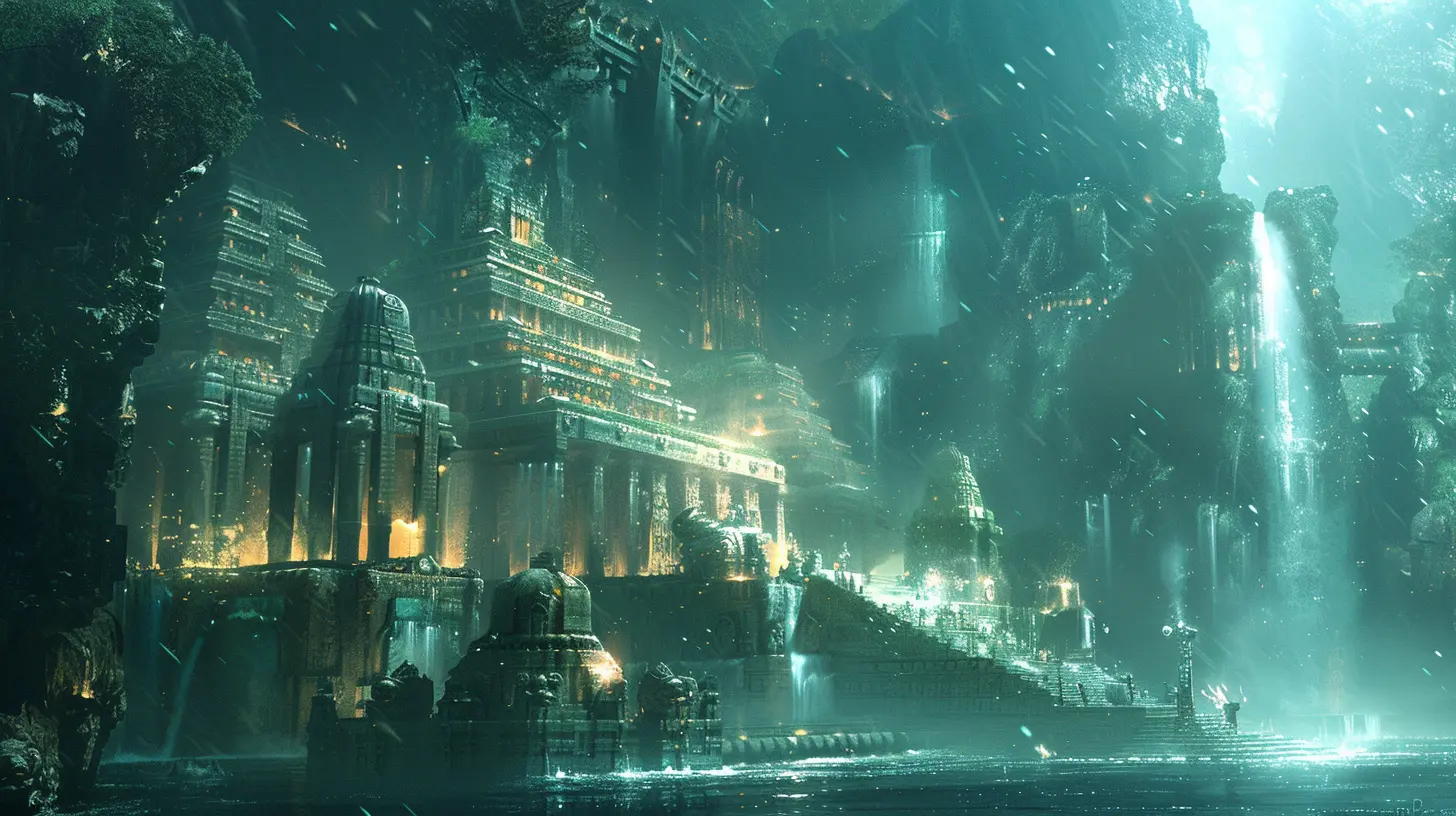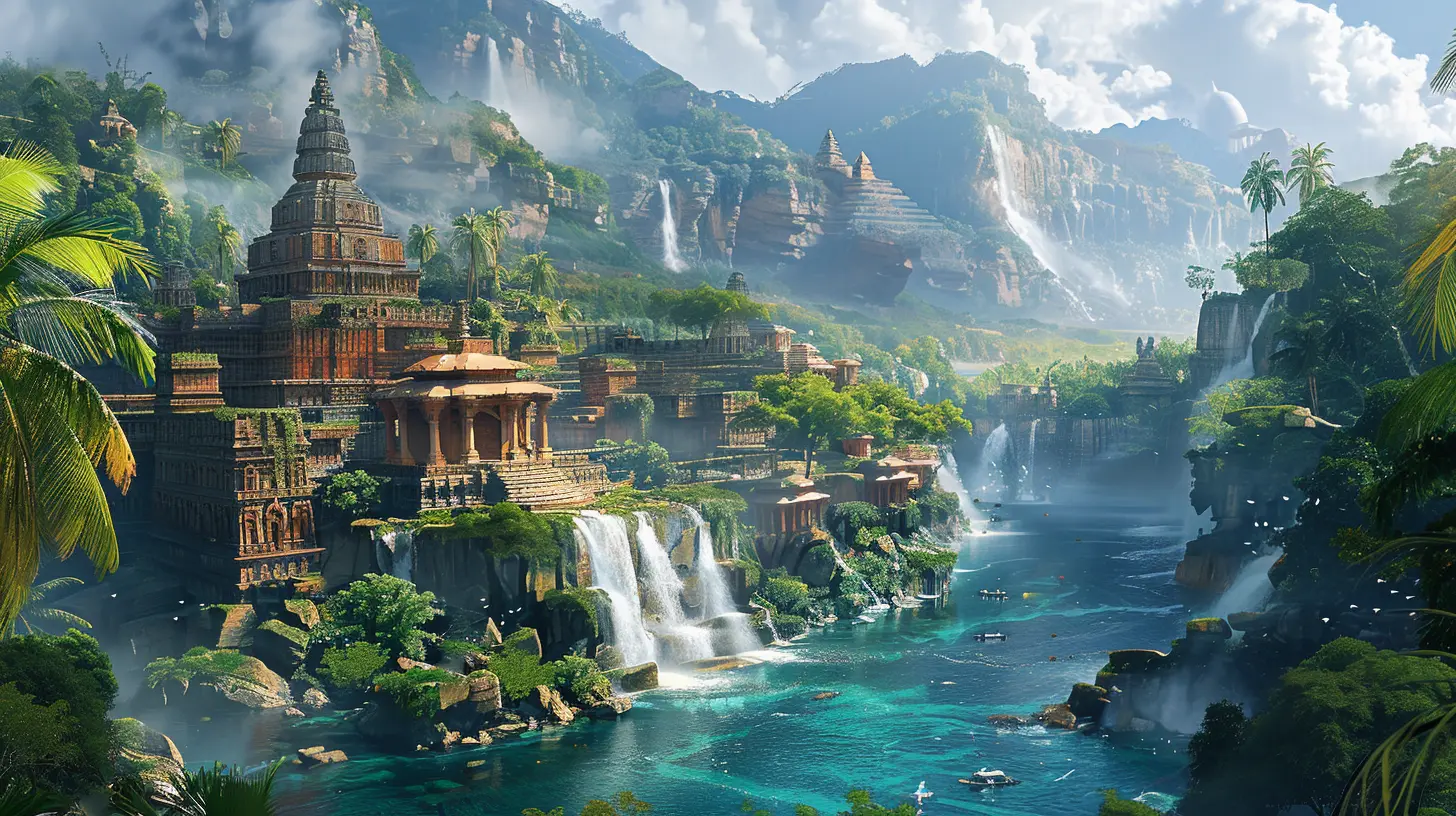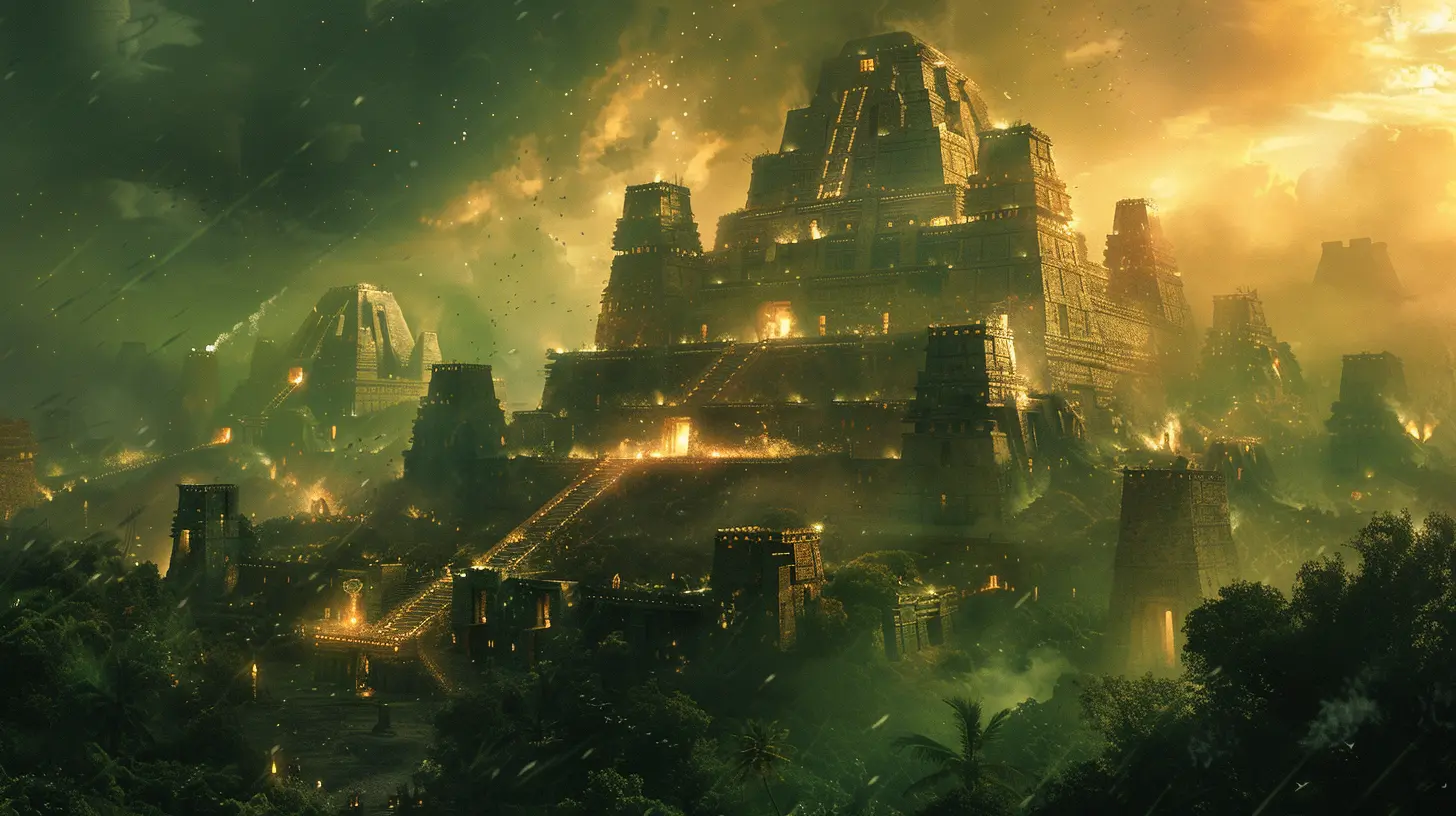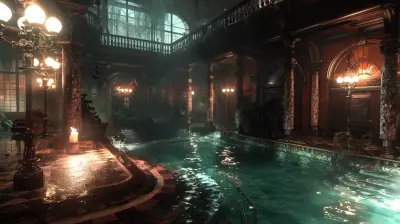The Allure of Lost Civilizations in Game Design
2 August 2025
Let’s be real for a second—we’ve all fantasized about finding some ancient, forgotten ruin, cracking open its secret passageway, and discovering the epic tale of a civilization long gone. Whether it's stumbling through jungles, deciphering cryptic hieroglyphs, or ducking traps Indiana Jones-style, the mystery of lost civilizations has always tickled our imaginations. Well, that same sweet allure has been working its magic in the world of game design too, and oh boy, the results are absolutely captivating!
From the haunting ruins of Atlantis to the sun-drenched temples of the Mayans, lost civilizations are like catnip for gamers and developers alike. But what makes them so irresistible? Pull up a seat, grab your favorite loot (coffee counts), and let’s dive headfirst into the ancient, dusty, treasure-laden world of game design.
Ancient Worlds, Fresh Gameplay
Let’s start with the basics. Why do game developers keep coming back to the theme of lost civilizations? Simple. It’s pure gold for creativity.Lost civilizations give you carte blanche to make things up while still grounding them in something that feels real. You’ve got the rich tapestry of actual history, combined with just enough mystery to sprinkle in some fantasy. That’s what you call a game designer’s playground!
Think about it: when a civilization is long-gone, unrecorded (or only partially known), it gives devs the room to riff. Want a forgotten city in the clouds where the people rode flying manta rays? Sure. Feel like building a subterranean Mayan-inspired culture powered by sacred crystals? Why the heck not?
The Power of the Unknown
There’s something undeniably sexy about the unknown. Curiosity is in our DNA. Lost civilizations play with that need to know—what happened to them? Why did they vanish? What secrets did they leave behind?Games like Shadow of the Tomb Raider or Uncharted exploit this curiosity perfectly. You’re chasing legends, piecing together cryptic clues, and unearthing artifacts—basically doing history’s detective work with a whole lot of action on the side.
And let’s be honest, digging into the past (even fictional ones) satisfies that explorer’s itch without the danger of venomous snakes or falling into a pit of spikes. Score!
World-Building with Rich Lore
Game designers are world-builders at heart. When it comes to crafting immersive worlds, few themes offer as much lore-friendly freedom as lost civilizations. You’ve got unique architectures, mythologies, languages, belief systems—the whole package!Look at Zelda: Breath of the Wild. Those Sheikah Shrines? Totally ancient civilization vibes. Ancient tech meets mysticism? Yes, please!
The same goes for Assassin’s Creed Origins. Ubisoft didn’t just give us Ancient Egypt—they gave us a vibrant, lived-in world filled with secrets, mysteries, and remnants of even older cultures buried beneath the sands.
Bottom line: lost civilizations feed the lore beast in the best possible way.
Perfect Backdrop for Quests and Adventure
You know what’s cooler than a fetch quest? A fetch quest through the ruins of a lost kingdom that hasn’t been touched in a thousand years.Lost civilizations create the perfect setting for quests. The setting is inherently adventurous. You’ve got temples, traps, puzzles, curses (because obviously), and forgotten treasures that everyone and their grandmother wants to get their hands on.
And let’s not forget how these themes turn basic mechanics—like solving puzzles or exploring dungeons—into something epic. That lever you pulled? It didn’t just activate a door; it opened a portal to a forgotten realm full of ancient guardians and lore-rich riddles.
Inspired Visual Aesthetics
Game art teams must love lost civilizations. From jungle-choked ruins to glowing underground cities, the visual palette is off the charts.No one’s going to complain about stumbling into a moss-covered ziggurat flanked by giant stone panthers. Those aesthetic choices elevate the gameplay experience by tapping into our primal love for mystery and grandeur.
Games like Horizon Zero Dawn go a step further by evolving this concept—blending post-apocalyptic and ancient aesthetics to create a "tech-lost-civilization" feel. It’s dusty ruins meets cyber-fossils. And it works.
Nostalgia and the Mythical Factor
Let’s rewind a bit. When we were kids, weren’t we all a little obsessed with mummies, Atlantis, or Easter Island? Lost civilizations carry this magical, almost mythical quality that hits us right in the nostalgia-buttons.It’s part fairy tale, part historical mystery—a delicious fusion that’s been baked into our adventurous psyches thanks to books, films, and now, games.
When game devs tap into these feelings, they’re not just designing levels. They’re rekindling that childlike excitement—the one where every crack in the wall might lead somewhere magical.
Cultural Richness vs. Creative Liberty
Okay, time for some real talk. There’s a fine line between being inspired by ancient cultures and misrepresenting them. The best games do their homework. They respect the origins while adding their own twist.Game designers who treat cultural influences with care and depth can elevate their titles from fun diversions to cultural experiences. You’re not just playing a game—you’re appreciating architectural styles, religious beliefs, and societal structures (even if loosely based).
Bonus points to games that include historians or cultural consultants on the team. That’s the kind of authenticity we stan.
Survival, Legacy, and Human Connection
You know what’s weirdly emotional? Realizing you’re standing in the virtual ruins of a once-thriving civilization. The cracked statues, faded murals, and broken structures all quietly whisper: “We were here. We mattered.”Games that embrace that tone—think Journey, The Last Guardian, or Shadow of the Colossus—evoke a haunting sense of legacy. They ask, “What are we leaving behind?” and “Will anyone remember us?”
Lost civilizations in games are more than just cool scenery. They’re ghost stories about humanity itself. They make you feel small in the grand scheme, while also pulling you closer to universal themes like survival, memory, and legacy.
Let’s Talk Replayability
Psst... Want to know a great trick for making players come back over and over? Shove some mysterious ruins into your map and hide secrets like Easter eggs.Games with lost civilization themes are often laced with collectibles, hidden areas, and optional lore that beg to be uncovered. This drip-feed of revelations keeps players hooked. Plus, it's a smart way to bolster replayability.
Remember how good it felt to finally unlock that secret tomb in Rise of the Tomb Raider? That’s not just game mechanics—that’s dopamine delivered on a stone tablet.
Sandbox Potential & Open World Vibes
You can’t just dump a lost civilization into a tiny corridor and call it a day. These settings beg for sprawling worlds, maze-like design, and exploration. And modern gamers? Oh, we live for open-world freedom.Lost civilizations work beautifully in sandbox games because they feel like exotic puzzles waiting to be unraveled on your own terms.
Legend of Zelda, Assassin’s Creed, Horizon, Tomb Raider—these titles let you go off the beaten path and find the story hidden in the cracks. And who doesn’t love uncovering stuff the game didn’t shove in your face?
Player Empowerment Through Discovery
You know what’s more empowering than slashing through a horde of enemies? Solving an ancient riddle, unlocking a sealed chamber, and unveiling a truth lost for millennia—all on your own.Games that use lost civilizations lean into that fantasy. They make you the archaeologist, the chosen one, the lore-keeper. You’re not just blasting baddies—you’re preserving culture, making sense of myths, and sometimes, saving what's left.
There’s a quiet thrill in that kind of storytelling. It feels less like you’re being told a narrative, and more like you’re uncovering one piece by piece. It’s your story now.
When the Setting Becomes a Character
In the best games, the lost civilization itself becomes a character. It has moods, secrets, and a narrative all its own. The environment talks to you.Think of Dark Souls or Elden Ring. Those worlds may be barren and cryptic, but every ruin, every statue, every shattered throne room tells a story. You're haunted by what once was—and that's powerful.
Designers use this technique to subtly deliver lore, build tension, and keep players guessing. You might finish the game and still be thinking about what really happened to that long-dead empire. And isn’t that the mark of great design?
Final Thought: Why We're Obsessed with the Forgotten
Let’s wrap this scroll of wisdom, shall we?Lost civilizations tap into something raw and timeless: our hunger for mystery, our love of exploration, and our deep-seated yearning to know where we came from—and where we might go. In game design, they’re more than a theme. They’re a catalyst for immersion, discovery, and powerful storytelling.
So next time you find yourself brushing the dust off some long-lost relic in your favorite RPG or stumbling upon a vine-covered temple in an open-world adventure, take a second to appreciate the allure of it all. You’re not just playing a game—you’re walking through the echoes of forgotten greatness.
And honey, that’s gaming at its finest.
all images in this post were generated using AI tools
Category:
Game WorldsAuthor:

Leandro Banks
Discussion
rate this article
2 comments
Hugo Lambert
Great insights into immersive storytelling!
November 1, 2025 at 3:46 PM

Leandro Banks
Thank you! I'm glad you enjoyed the article!
Cecilia McPhee
Lost civilizations in games: the ultimate ‘where’s Waldo’ of history! Who needs a GPS when you can just follow the breadcrumbs of ancient ruins and an occasional dragon?
August 8, 2025 at 2:19 AM

Leandro Banks
Absolutely! Lost civilizations add a thrilling layer of exploration and mystery in games, making history feel like an exciting scavenger hunt filled with adventure and discovery.


